Mid-century modern gardens are a perfect blend of nature and design. They bring the sleek lines and bold shapes of 1950s and 60s architecture into your outdoor space. These gardens are all about creating a calm, stylish area that connects your home to the world outside.
You can make your garden feel like a mid-century oasis with a few key elements. Think clean lines, geometric shapes, and a mix of natural and man-made materials. Large patio slabs, gravel paths, and wooden decking are common features. Plants are often used to create structure, with carefully placed trees and shrubs forming living sculptures.
Colour is important in mid-century modern gardens too. Bold, bright hues like orange, yellow, and turquoise can add fun pops of colour. These might appear in planters, garden furniture, or even painted walls. The overall effect is a space that’s both relaxing and visually exciting – perfect for enjoying the outdoors in style.
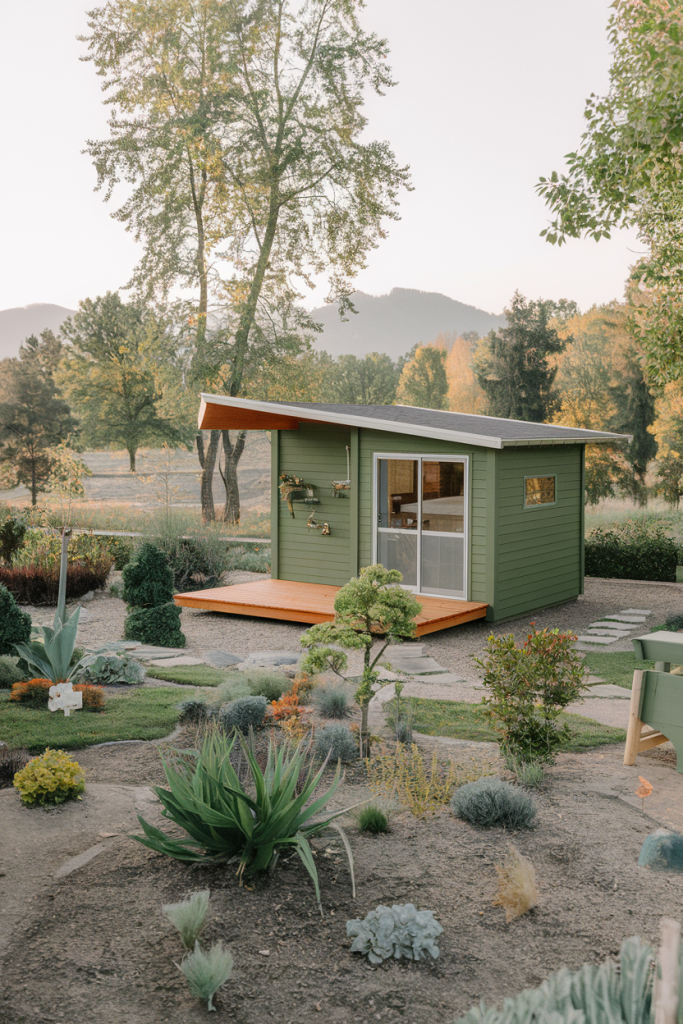
Designing Your Mid-Century Modern Garden
Creating a mid-century modern garden blends simple design with nature. You’ll use clean lines and geometric shapes to make a stylish outdoor space that feels both retro and timeless.
Garden Layout and Planning
Start by sketching your garden layout. Use straight lines and angular shapes to divide the space. Think about how you’ll move through the garden. Create distinct areas for relaxing, dining, and plants.
Add privacy with tall grasses or wooden screens. These give your garden a cosy feel without blocking light. Use levels to add interest. Raised beds or sunken seating areas can make your space more dynamic.
Don’t forget to plan for all seasons. Pick plants that look good year-round. This keeps your garden lively even in winter.
Selecting the Right Plant Species
Choose plants that fit the mid-century vibe. Look for those with bold shapes and interesting textures. Succulents, palms, and ornamental grasses work well.
Here’s a quick list of plants to consider:
- Agave
- Bird of Paradise
- Japanese Maple
- Philodendron
- Yucca
Mix tall and short plants to create layers. This adds depth to your garden. Use potted plants to add pops of colour and move them around as needed.
Don’t overcrowd your space. Mid-century design values simplicity. Leave room for each plant to shine.
Incorporating Hardscapes and Water Features
Hardscapes are key in mid-century gardens. Use concrete pavers for paths and patios. Lay them in a grid or staggered pattern for a modern look.
Add a water feature for a calm vibe. A simple fountain or shallow pool works well. The sound of water adds to the peaceful feel of your garden.
Try these hardscape ideas:
- Gravel paths
- Concrete planters
- Stone walls
- Metal sculptures
Light your garden to enjoy it at night. Use sleek outdoor lamps or hidden spotlights. This creates a magical atmosphere after dark.
Remember, your garden should be an extension of your home. Keep the style consistent for a seamless indoor-outdoor flow.
21 Stunning Mid-Century Modern Garden Landscapes👇
1.
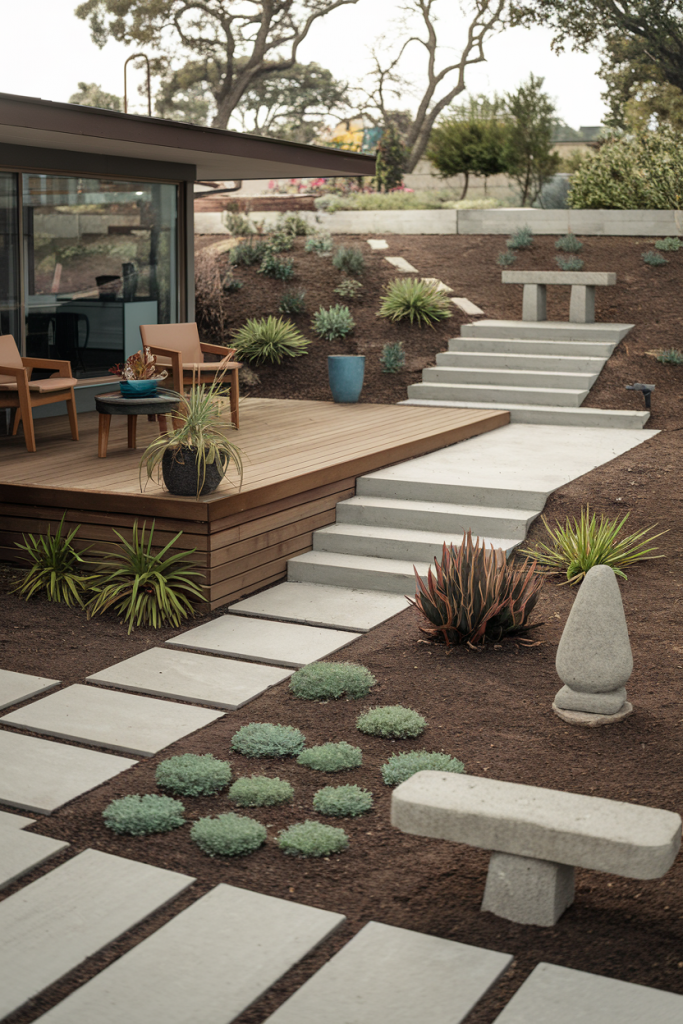
2.
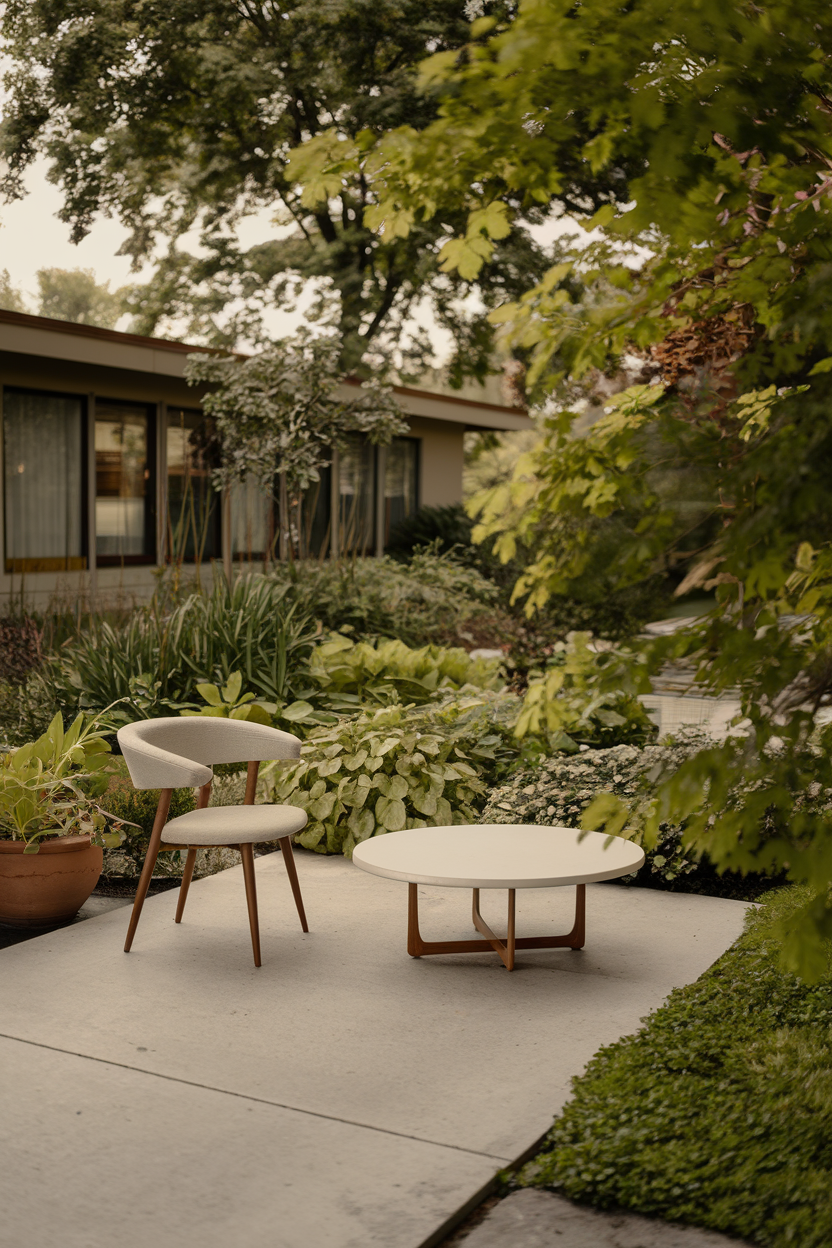
3.
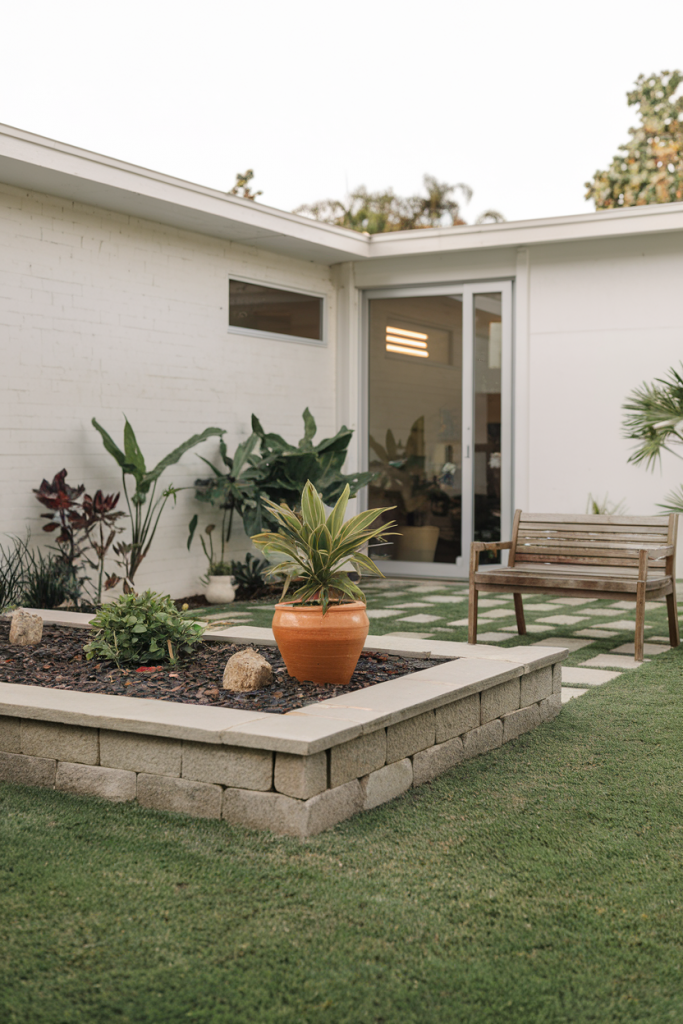
4.
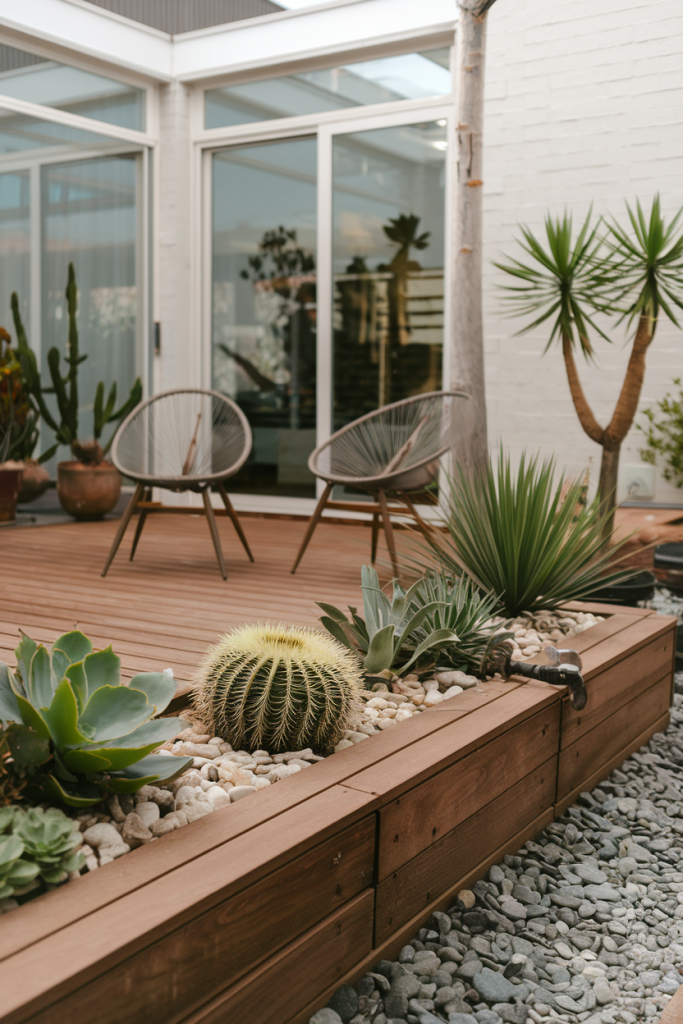
5.
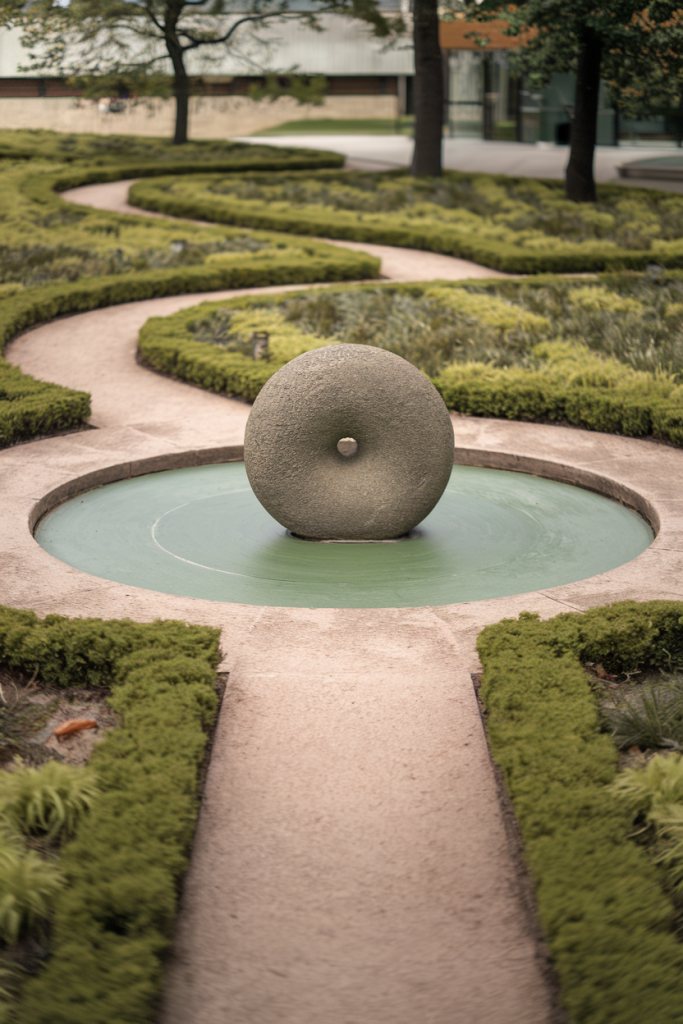
6.
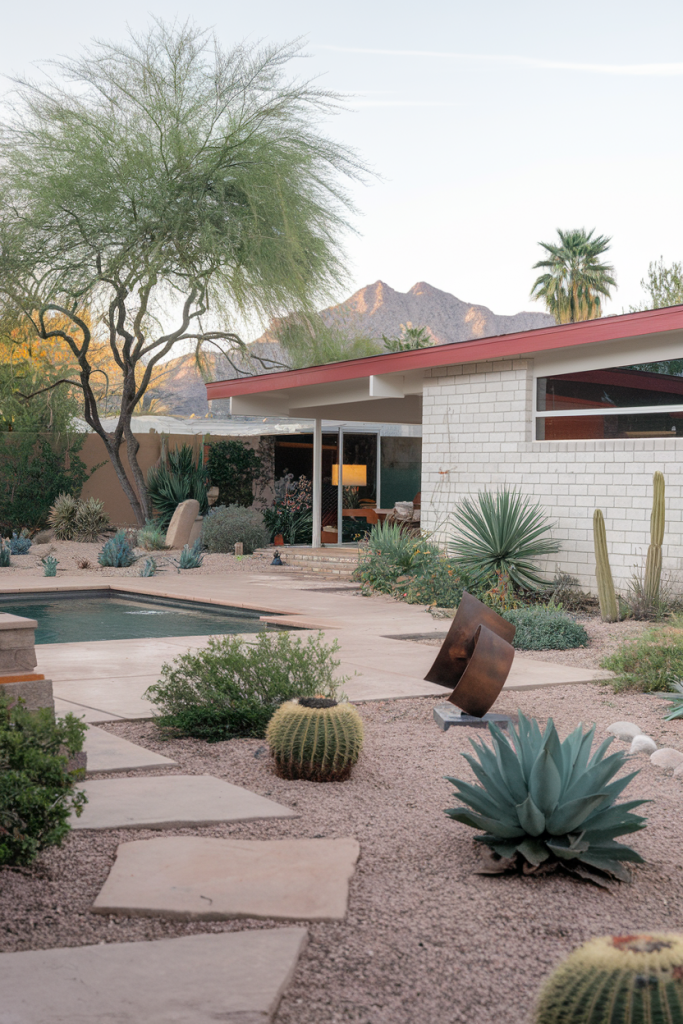
7.
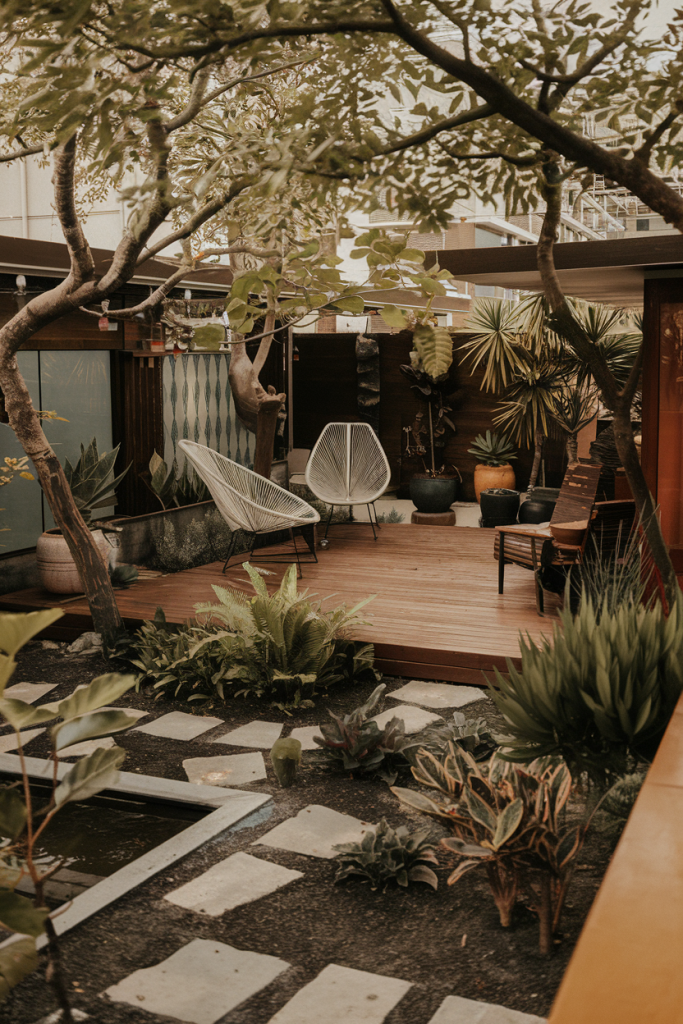
8.
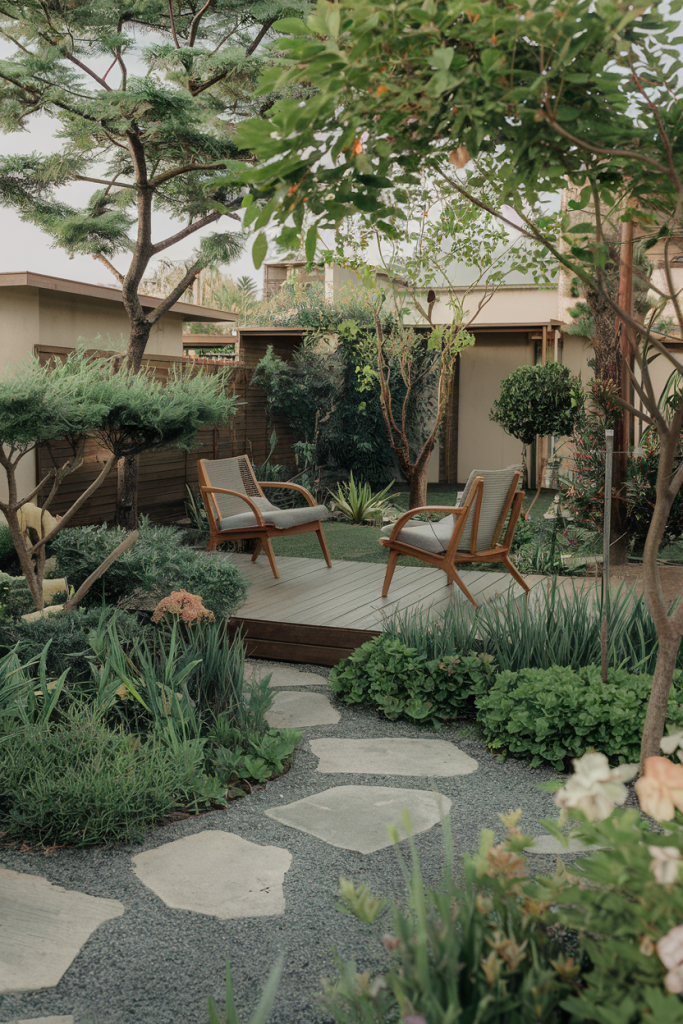
9.
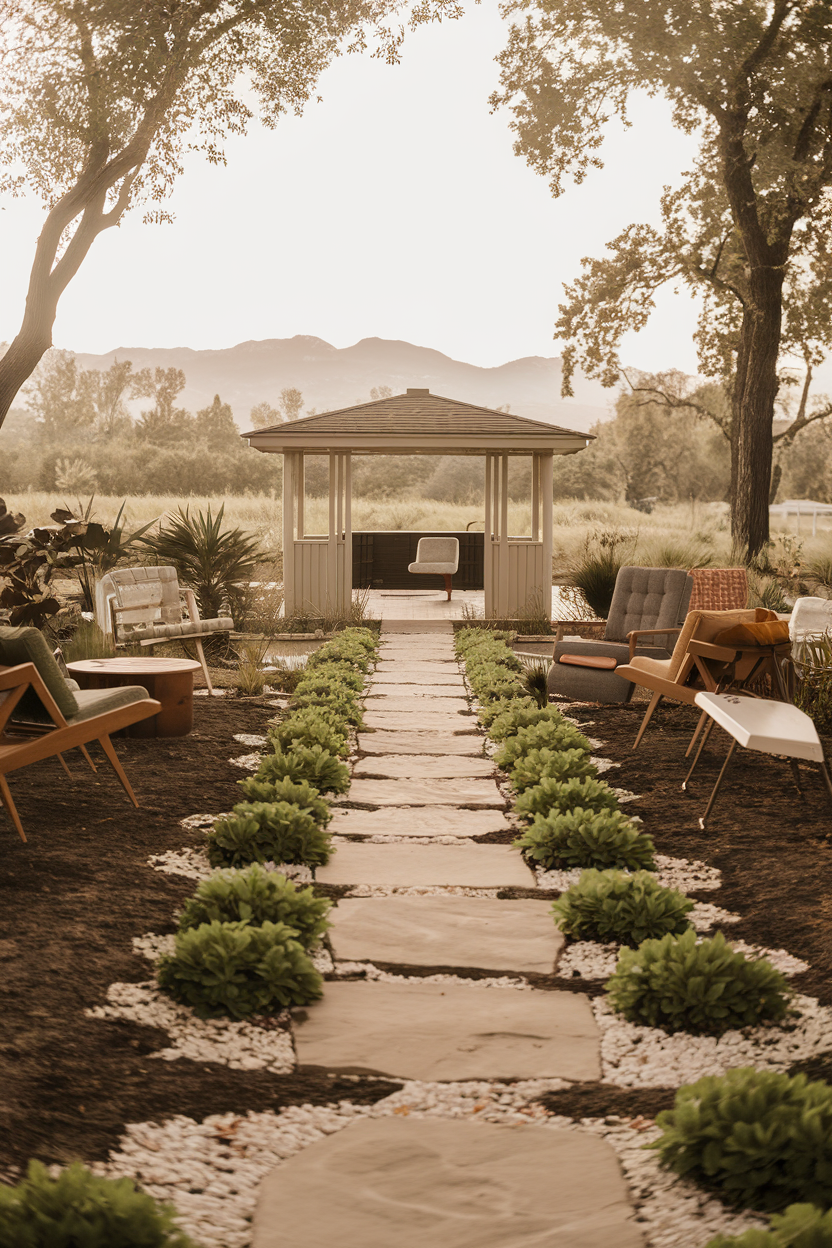
10.
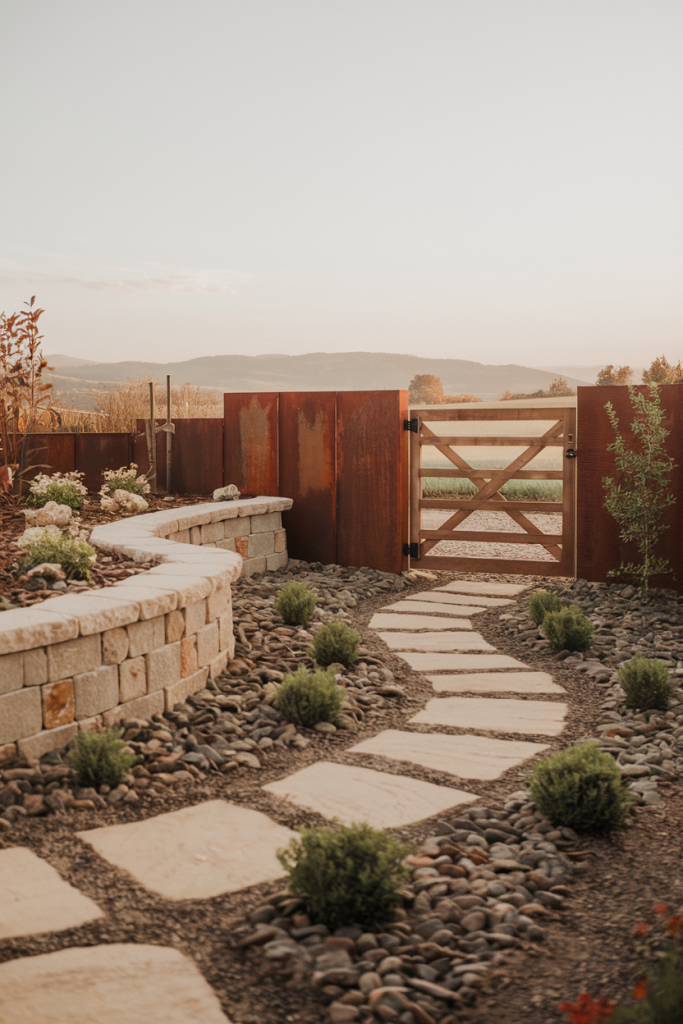
11.
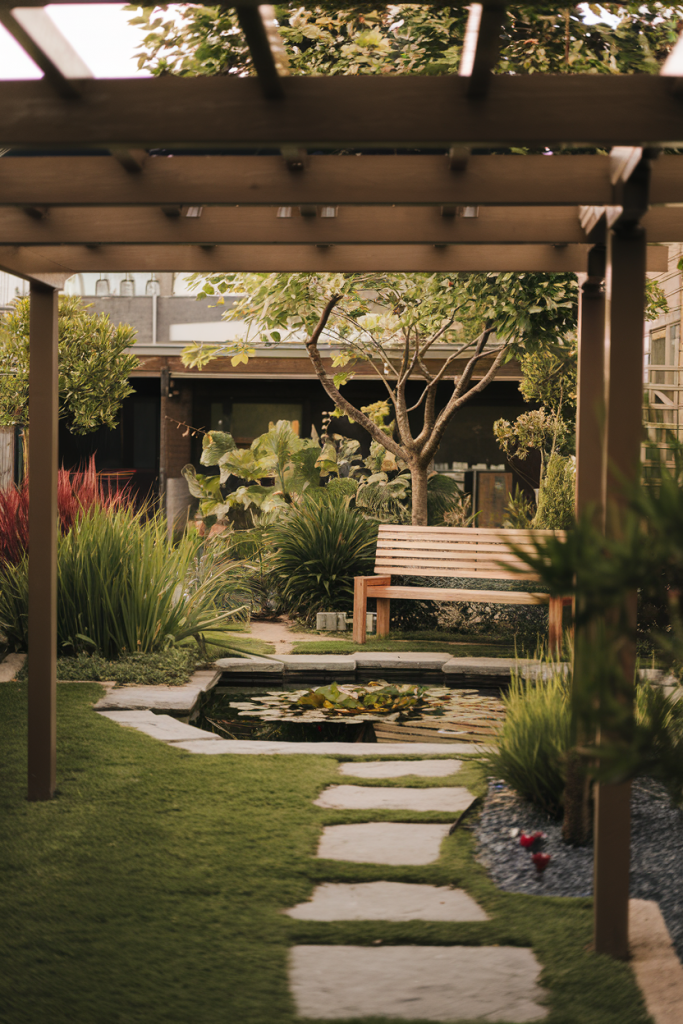
12.
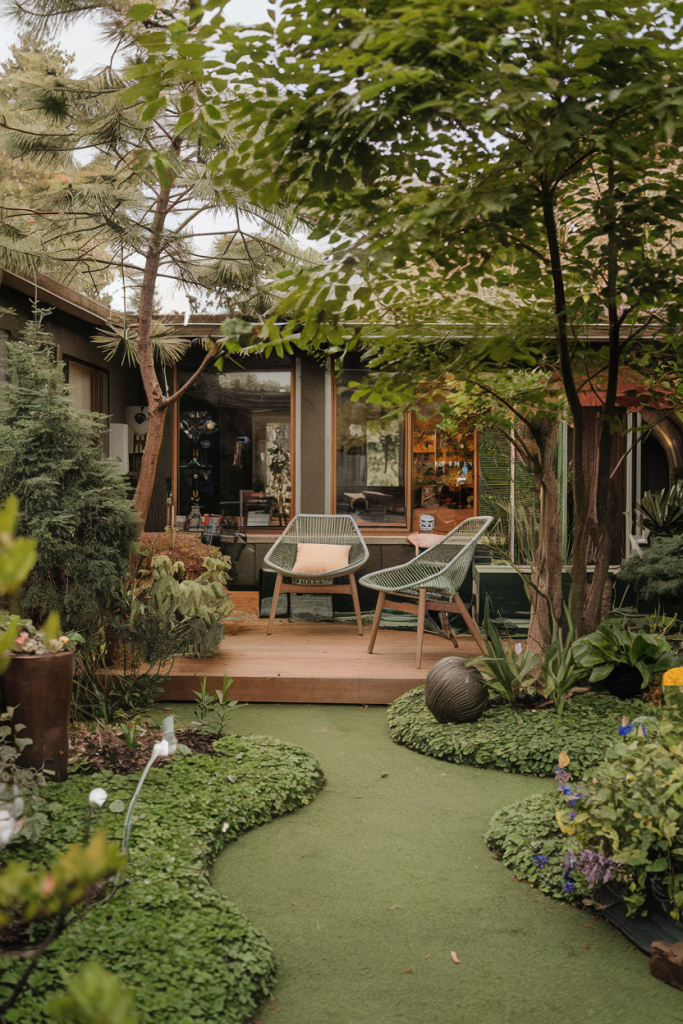
13.
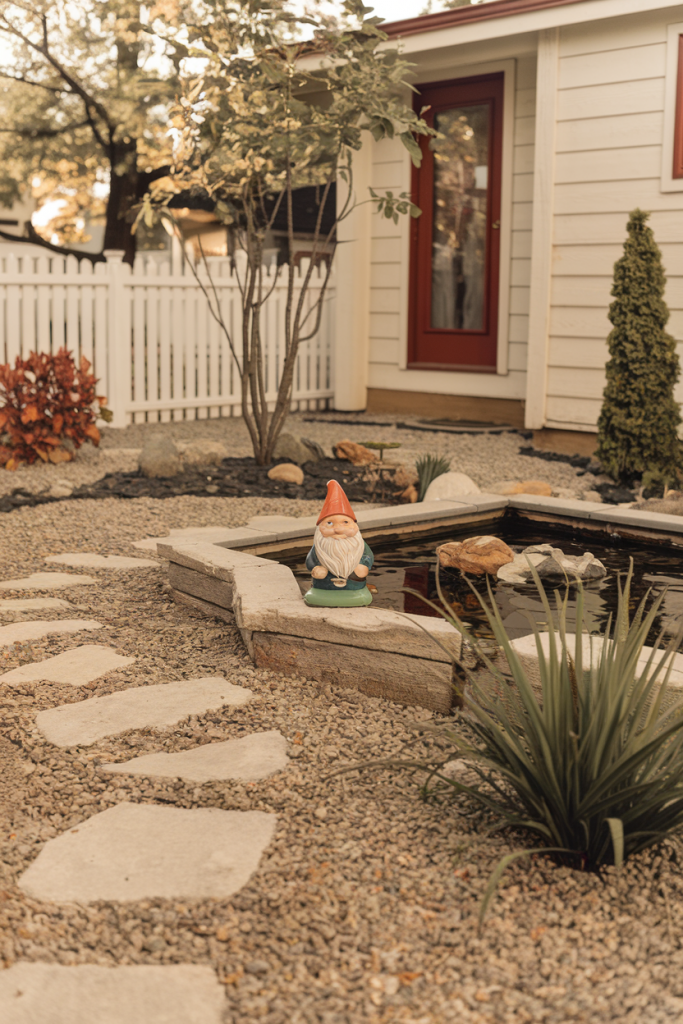
14.
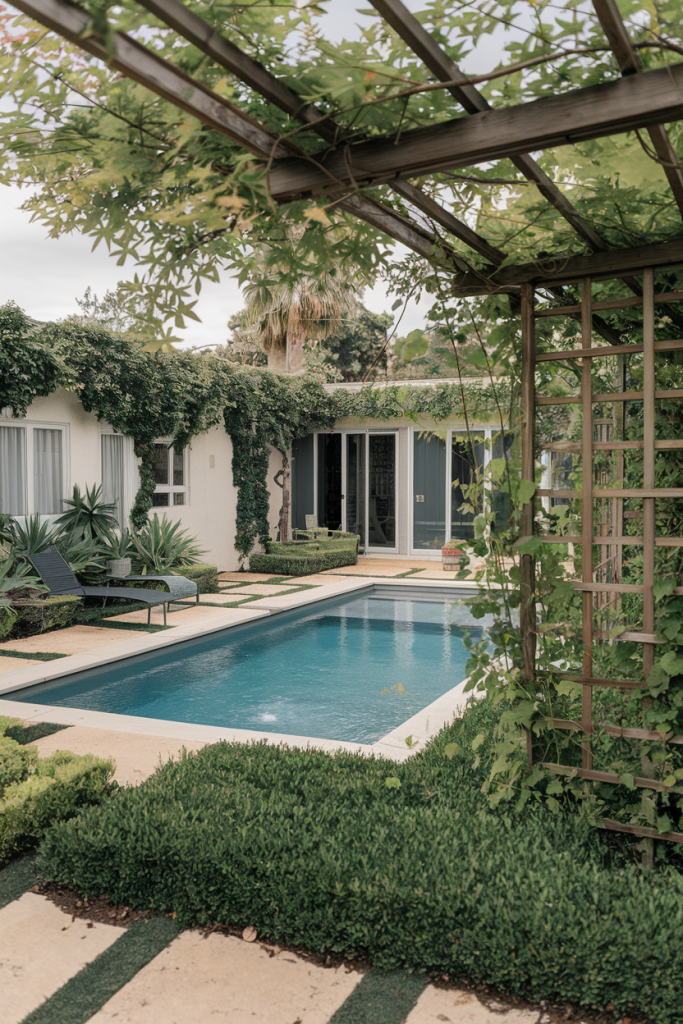
15.
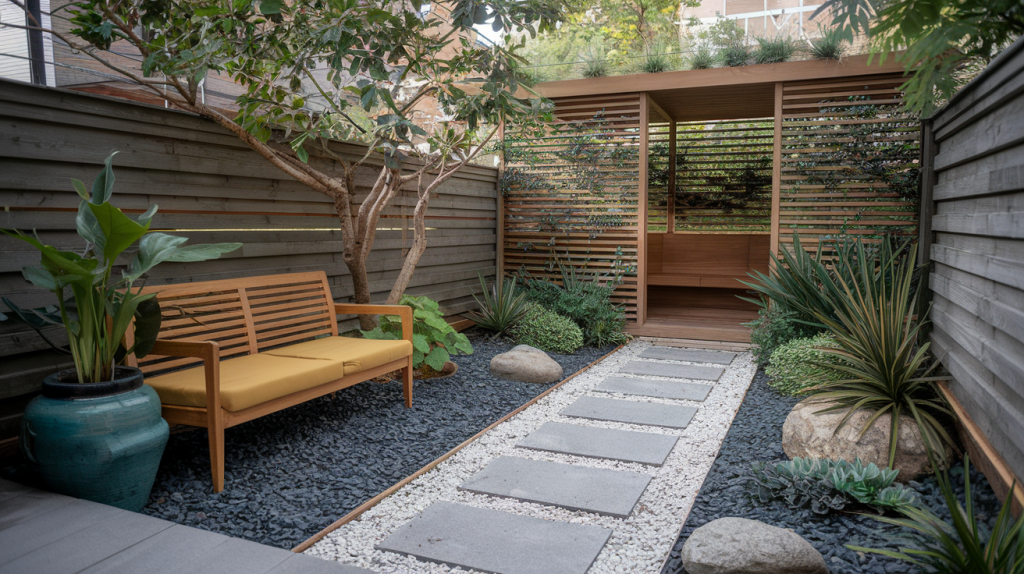
16.
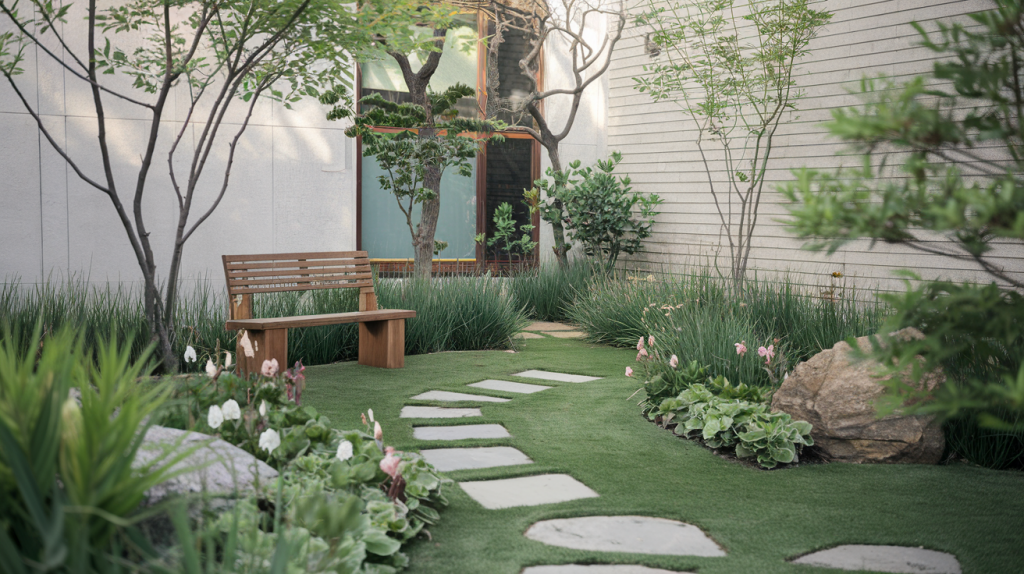
17.
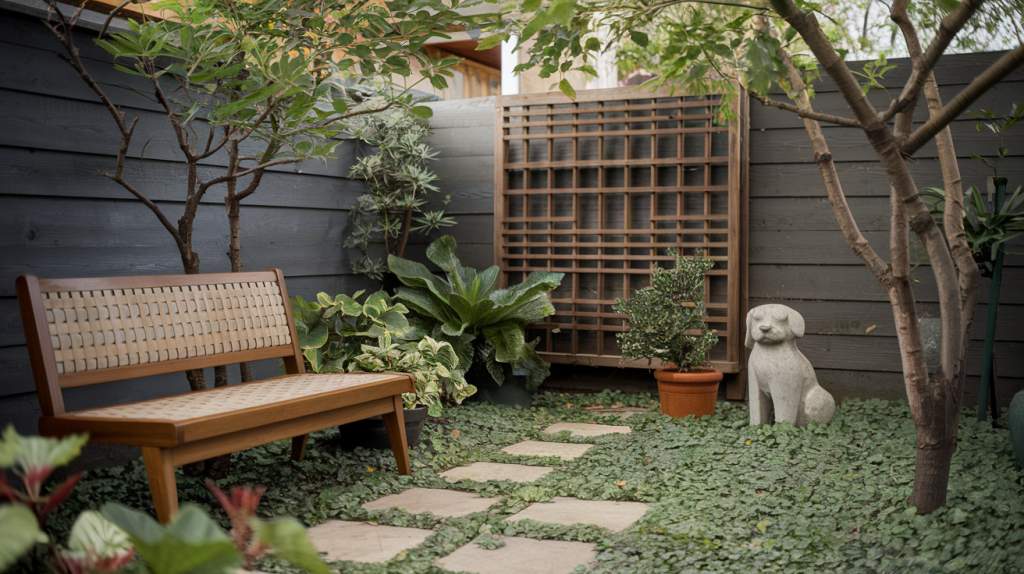
18.
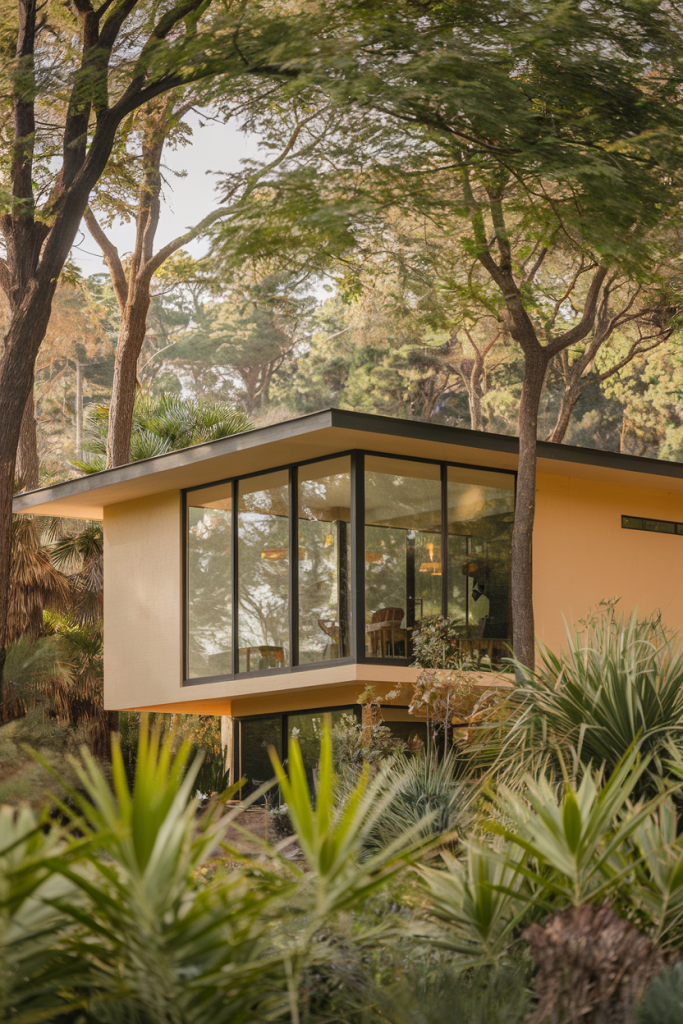
19.
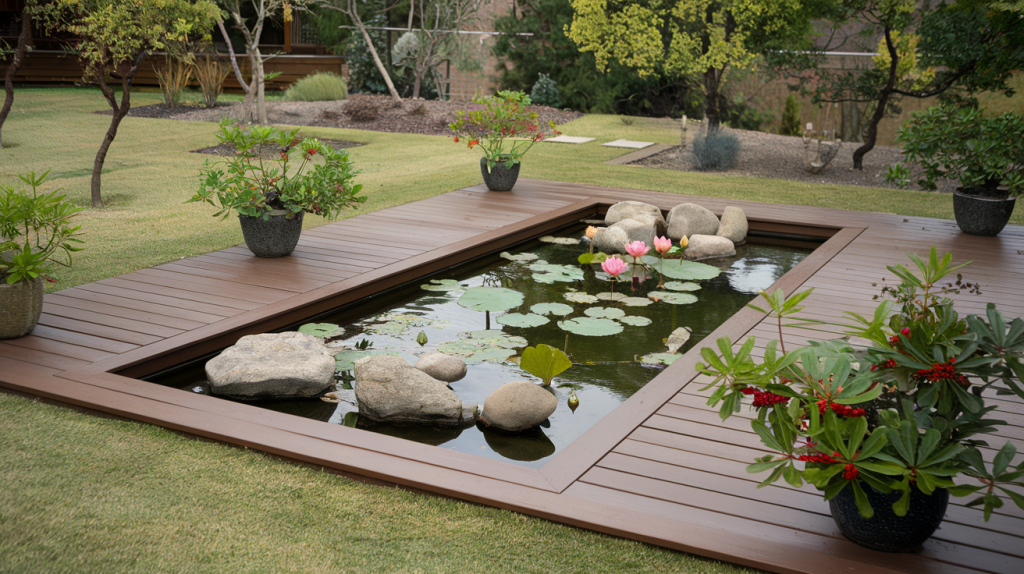
20.

21.
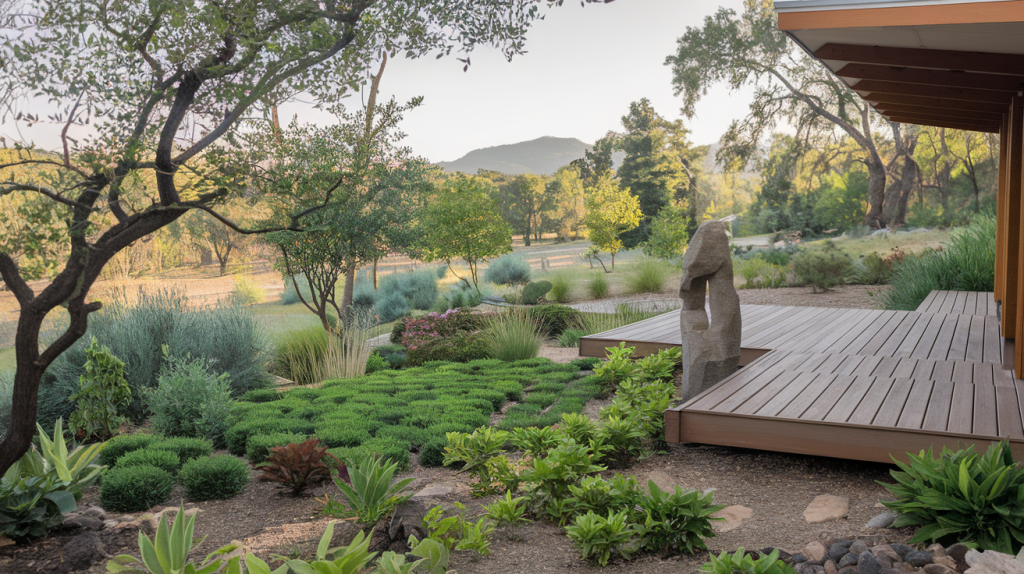
Landscape Elements and Materials
Mid-century modern gardens blend natural and man-made elements. Key features include carefully chosen plants, hardscaping materials, and sculptural designs that create a harmonious outdoor space.
Choosing Shrubs and Trees
When picking plants for your mid-century garden, opt for those with interesting shapes and textures. Japanese maples are a popular choice, with their delicate leaves and graceful form. Sculptural shrubs like boxwood and yew work well too. They can be trimmed into geometric shapes to match the clean lines of mid-century architecture.
For trees, consider slender birches or small fruit trees. These add vertical interest without overwhelming the space. Palms and cycads are great options if you live in a warmer climate. They bring a touch of the tropics that was popular in mid-century design.
Don’t forget about grasses and bamboo. These plants add movement and sound to your garden. They also create privacy screens when planted in groups.
Utilising Natural Stone and Concrete Pavers
Stone and concrete are key materials in mid-century garden design. Large, flat stones can be used to create stepping paths or patios. Slate and limestone are good choices for a natural look. For a more modern feel, try smooth river rocks or pebbles.
Concrete pavers are another classic option. Look for ones with clean edges and a smooth surface. You can arrange them in geometric patterns to echo the lines of your home. Try alternating light and dark pavers for added visual interest.
Boulders can serve as focal points in your garden. Place them strategically to create a natural, zen-like feel. They also work well as seating or small tables in outdoor living areas.
Integrating Sculptural and Raised Planters
Planters are a great way to add height and interest to your mid-century garden. Look for ones with clean lines and simple shapes. Concrete planters in geometric forms are a classic choice. You can also find vintage ceramic or fibreglass planters that fit the mid-century style.
Raised planters help define different areas in your garden. Use them to create borders or to separate your patio from planted areas. They’re also useful for growing herbs or small vegetables near your kitchen.
For a truly sculptural look, try using large, statement planters as garden art. Fill them with plants that have interesting shapes, like succulents or ornamental grasses. This creates eye-catching focal points throughout your outdoor space.
Creating Functional Outdoor Living Spaces
Mid-century modern gardens blend style with practicality. You can create inviting spaces for relaxation and entertainment that fit this aesthetic. Let’s explore how to design patios, outdoor kitchens, and add fun elements to your garden.
Designing Patios and Outdoor Kitchens
Your patio is the heart of your outdoor living area. Choose materials like concrete or natural stone that match the clean lines of mid-century design. Add a pergola for shade and visual interest. It can be wooden or metal with a sleek look.
For your outdoor kitchen, think simple and functional. Built-in grills, a small fridge, and a prep area are key. Use stainless steel appliances for a modern touch. Add a bar area with stools for casual dining.
Don’t forget lighting. String lights or modern wall sconces create a cosy mood for evening gatherings.
Adding Elements for Entertainment and Relaxation
Fire pits are perfect for cool nights. Pick a round or square design that fits your style. Place comfy seating around it for chats with friends.
A water feature can add a calming sound to your space. Try a simple fountain or a small pond with clean edges.
For extra fun, add a bocce ball court or a putting green. These fit well with the mid-century vibe and give you more ways to enjoy your garden.
Lastly, choose furniture that’s both comfy and stylish. Look for pieces with tapered legs and simple shapes in bright colours or neutrals.
Incorporating Regional Influence and Biodiversity
Mid-century modern gardens can reflect local environments and support native wildlife. You can adapt these gardens to different climates and attract local animals, creating spaces that are both stylish and eco-friendly.
Adapting to Different Climates and Locations
In San Francisco, you might add Japanese maples for their striking red leaves. These trees thrive in the city’s mild climate. For Portland’s rainy weather, yew shrubs work well. They’re hardy and provide year-round greenery.
In warmer areas, palm trees fit the mid-century look perfectly. They add a tropical touch to your garden. Agapanthus flowers are another great choice for sunny spots. Their blue blooms stand out against modern architecture.
Remember to use plants that suit your local soil and rainfall. This helps your garden stay healthy with less work. It also saves water, which is good for the environment.
Attracting Local Wildlife
Your mid-century garden can be a haven for local wildlife. Plant flowers that butterflies love, like agapanthus. Their purple blooms are not only pretty but also butterfly magnets.
Add bird baths and feeders to bring in feathered friends. Place them near shrubs so birds feel safe. You can also install bee hotels to help these important pollinators.
Use native plants in your design. They’re best for local insects and birds. Plus, they’re easier to care for as they’re used to your climate. By doing this, you create a garden that’s both stylish and full of life.
Privacy and Boundary Treatments
Mid-century modern gardens often blend indoor and outdoor spaces. Creating private areas is key for enjoying these open designs. Fences, walls, and plants can all help make secluded spaces.
Using Fencing and Walls for Seclusion
Wood fences are a top choice for mid-century gardens. They offer a warm, natural look that fits the style. You can paint them to match your home or leave them bare for a rustic feel. Horizontal slats are popular and give a sleek, modern touch.
Retaining walls are great for sloped gardens. They can create flat areas for patios or plantings. Use brick or concrete for a classic mid-century look. These walls can also double as seating areas.
For a bold statement, try a breeze block wall. These patterned concrete blocks let light and air through while still giving privacy. They’re a fun nod to mid-century design.
Incorporating Vegetative Screens
Plants are a soft, living way to create privacy. Hedges are classic choices that give year-round cover. Boxwood and yew are neat, tidy options that you can trim into shapes.
For a more natural look, try mixed shrub borders. These can include flowering plants for extra colour. Bamboo grows quickly and makes a great screen. It also adds a tropical feel to your garden.
Climbing plants on trellises or pergolas can make lovely green walls. They’re perfect for hiding ugly views or creating cosy nooks. Try jasmine or clematis for fragrant options.
Remember to think about how plants will grow over time. You want your privacy screen to last for years to come.
Garden Accessories and Decor
Mid-century modern gardens shine with the right accessories and decor. These elements add personality and style to your outdoor space.
Choosing the Right Accessories for Your Garden
Pick items that match the clean lines and simple shapes of mid-century design. Look for planters with sleek forms in materials like fibreglass or concrete. Add a pop of colour with bold, geometric plant pots.
For seating, choose chairs with tapered legs and organic curves. Eames-style moulded plastic chairs work well outdoors. A small side table in teak or metal can hold drinks and snacks.
Don’t forget lighting! Sputnik-style pendant lights or globe lanterns create a fun, retro vibe. Solar-powered path lights in simple shapes guide you along the walkway at night.
Incorporating Art and Focal Points
Art pieces can make your garden stand out. Look for sculptures with clean lines or abstract forms. A large, colourful mobile hanging from a tree branch adds movement and interest.
Create a focal point with a water feature. A sleek, rectangular pond or a simple fountain fits the mid-century look. Place it where you can enjoy it from your patio or through a window.
Use repetition to make a statement. Line your garden path with a row of identical planters or sculptures. This adds symmetry and a sense of order to your space.
Don’t forget wall art! Hang weather-resistant pieces on garden walls or fences. Geometric patterns or abstract designs work well in mid-century gardens.
Maintaining Your Mid-Century Modern Garden
Keeping your mid-century modern garden looking its best takes some effort. Regular care and seasonal tasks will help preserve its vintage charm and sleek style.
Regular Upkeep for Longevity
Tidy up your garden often to keep its clean lines. Rake fallen leaves and remove dead plants quickly. Weed beds and paths to maintain that crisp look. Water deeply but less often to encourage strong roots.
Mulch beds with pebbles or bark to cut down on weeds and water use. This fits the low-maintenance vibe. Check your hardscaping too. Clean concrete slabs and repair any cracks in walls or paths.
Prune shrubs lightly to keep their shapes neat. Don’t let plants get overgrown or they’ll spoil the minimalist feel. A bit of care goes a long way in keeping your garden smart.
Seasonal Care and Pruning Tips
In spring, trim back winter damage and shape plants. Add fresh compost to beds to feed your plants. Summer is for light pruning to keep things tidy. Water more in hot spells, focusing on roots not leaves.
Autumn calls for a big tidy up. Cut back spent plants and rake up leaves. Protect tender plants from frost. Winter is quiet, but check for storm damage. Prune deciduous trees and shrubs while they’re dormant.
Year-round, keep an eye out for pests and diseases. Tackle issues early to avoid big problems. With some regular love, your mid-century modern garden will stay stylish all year.
